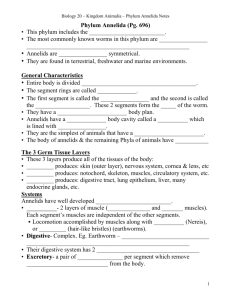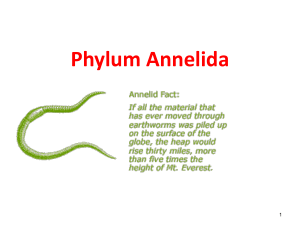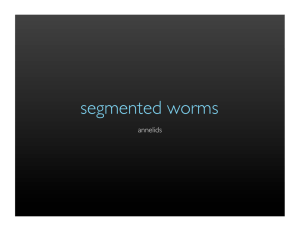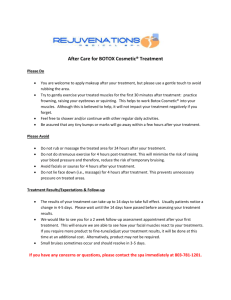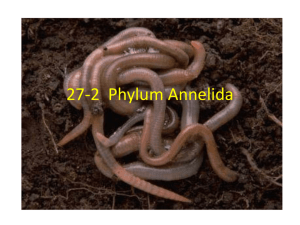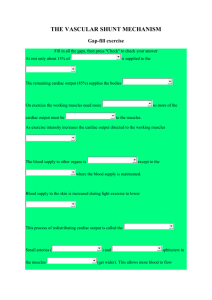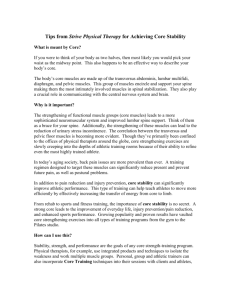Segmented Worms (Phylum Annelida)
advertisement
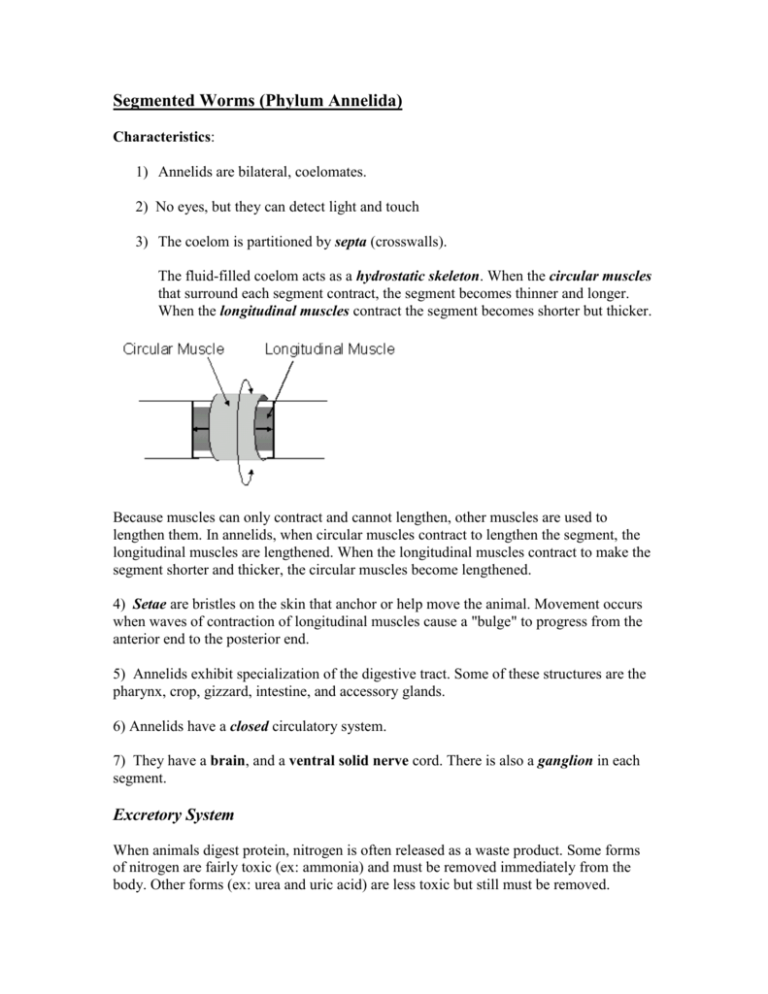
Segmented Worms (Phylum Annelida) Characteristics: 1) Annelids are bilateral, coelomates. 2) No eyes, but they can detect light and touch 3) The coelom is partitioned by septa (crosswalls). The fluid-filled coelom acts as a hydrostatic skeleton. When the circular muscles that surround each segment contract, the segment becomes thinner and longer. When the longitudinal muscles contract the segment becomes shorter but thicker. Because muscles can only contract and cannot lengthen, other muscles are used to lengthen them. In annelids, when circular muscles contract to lengthen the segment, the longitudinal muscles are lengthened. When the longitudinal muscles contract to make the segment shorter and thicker, the circular muscles become lengthened. 4) Setae are bristles on the skin that anchor or help move the animal. Movement occurs when waves of contraction of longitudinal muscles cause a "bulge" to progress from the anterior end to the posterior end. 5) Annelids exhibit specialization of the digestive tract. Some of these structures are the pharynx, crop, gizzard, intestine, and accessory glands. 6) Annelids have a closed circulatory system. 7) They have a brain, and a ventral solid nerve cord. There is also a ganglion in each segment. Excretory System When animals digest protein, nitrogen is often released as a waste product. Some forms of nitrogen are fairly toxic (ex: ammonia) and must be removed immediately from the body. Other forms (ex: urea and uric acid) are less toxic but still must be removed. The excretory system consists of two nephridia most of the segments that function to remove excess water and to rid the body of nitrogenous wastes. The kidneys of vertebrates contain many nephridia that remove these wastes and produce urine. Earthworms (Class Oligochaeta) 1) They are important in soil ecology because they eat organic matter in the soil and break it down. Their activities mix and aerate the soil. 3) Gas exchange occurs across the skin, so the body must remain moist. Earthworms are hermaphroditic but cross-fertilize with another individual. Sperm are produced by testes located within seminal vesicles. Sperm is stored within the seminal vesicles. Sperm from another individual is stored in a seminal receptacle. After mating, the clitellum produces a slime tube that slides forward toward the anterior segments. As it passes along, it receives deposits of eggs and sperm from another individual that has been stored in the seminal receptacles. Fertilization occurs within the mucous cocoon, which is then deposited in the soil. Leeches (class: Hirudinea) Most leeches are parasites that have oral and posterior suckers used to attach to the host.. Aortic Arches Bloodsucking leeches produce hirudin, a powerful anticoagulant, in their saliva. When surgeons reattach severed human fingers, they occasionally use laboratory-raised leeches during the patient’s recovery. The leeches suck blood from the tissues around the reattachment sites, release anesthetics and anticoagulants, and thereby relieve pressure and decrease pain. Removal of fluids from the area enables fresh fluids to move into the area.
